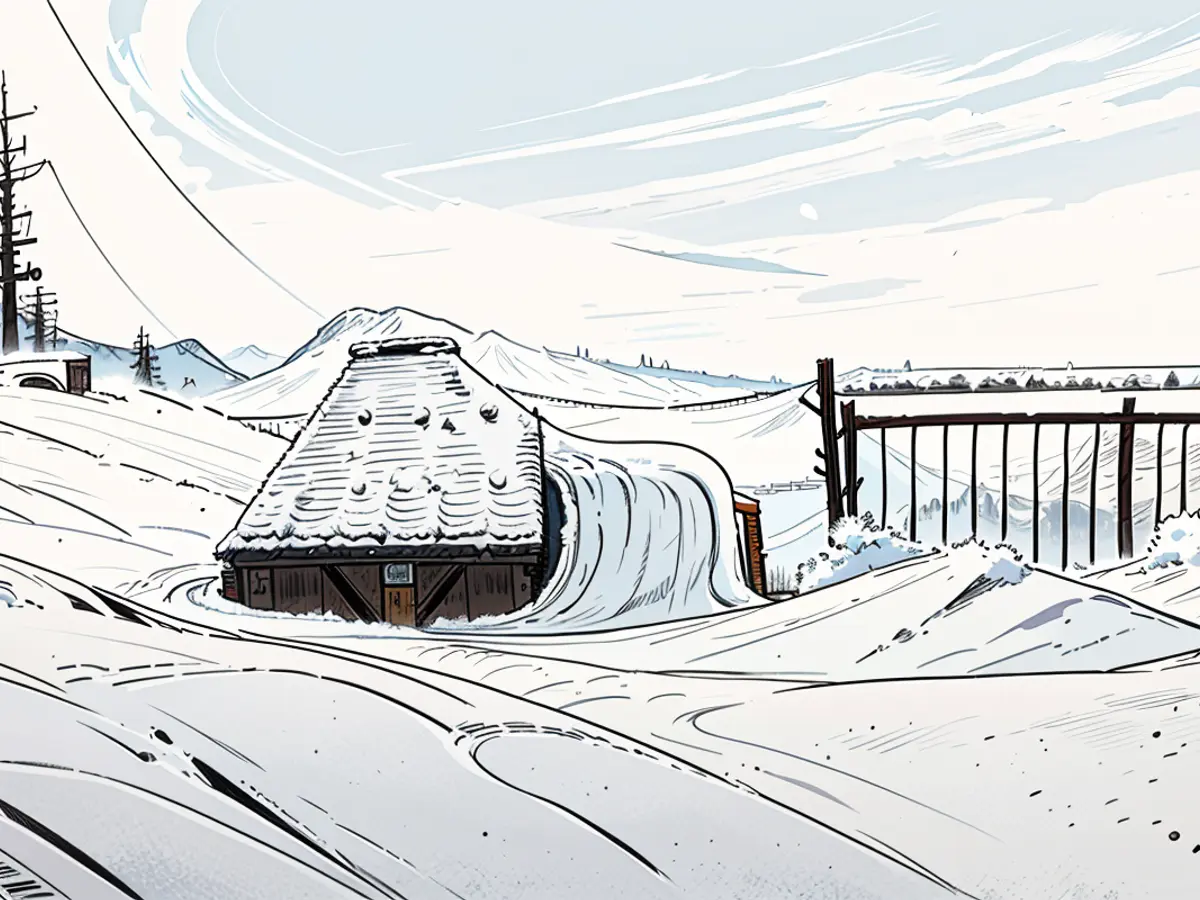heightened warning in Schöna, imminent avalanche risk in Bavaria
Intense rainfall and snowfall are causing difficulties in parts of Germany. The winter storm in the Bavarian Alps has increased the possibility of avalanches in high altitudes. Above approximately 1200 meters, a thick layer of snow has accumulated, reaching up to a meter in thickness in the highest regions, as reported by the Bavarian Avalanche Warning Service.
Fresh snow, blown by strong winds, is a concern and could trigger slab avalanches in steep terrain near ridges. There's a high probability of avalanches in the Berchtesgaden Alps, capable of causing substantial debris, according to the report.
The Bavarian Avalanche Warning Service anticipates the situation to remain tense in the coming days. Additionally, many trekking trails in higher elevations are covered in snow, making them icy and slippery. Current snow hotspots include the high altitudes of the Berchtesgaden and Chiemgau regions, with areas receiving over a meter of snow. This is noteworthy considering the time of year. The snow depth at the Dürrnbachhorn station above Winklmoos in the Chiemgau Alps is about 1.20 meters, while on the Zugspitzplatt, it is nearly 90 centimeters.
Alarm Level One in Dresden
Due to the persistent rain and flooding, some areas in Germany have reached the first alarm level. The forecast calls for heavy rain on Tuesday, particularly in parts of Saxony and Bavaria, potentially causing water levels to rise even more.
In Dresden, the capital of Saxony, Alarm Level One was declared on Tuesday morning, with water levels surpassing four meters. The water levels are expected to continue rising until the middle of next week.
Temporary cleanup operations at the partially collapsed Carol Bridge in Dresden have been halted. "It's done," the Dresden Fire Department reported on Saturday evening. "The area at the New Town Bridgehead of the Carol Bridge has been completely cleared of the debris from the collapsed bridge section C." However, the collapsed section of the bridge remains in place for now. According to the Dresden Environmental Office, the debris is not anticipated to significantly impact the flooding.
In Schōna, Alarm Level Two has been declared in the Elbe, indicating the beginning of flooding, according to the State Flood Center. Alarm Level Two has been attained at the Lausitzer Neiße in Görlitz, where the water level has started to decrease.
In Bavaria, the peak water levels were mostly achieved by Sunday morning, according to the Flood Information Service. The expected rainfall on Sunday afternoon will only cause a moderate increase in the east, as predicted by the Bavarian State Office for the Environment.
Relief Expected by Wednesday
The future developments are uncertain, as reported. Based on current forecasts, the affected regions could experience similar water levels up until Tuesday. The rain is expected to diminish significantly on Tuesday, and the situation in Bavaria should improve by Wednesday.
In Passau, the Danube river reached its peak level before dawn. Certain riverside paths and parking lots had to be closed, as per the city reports. In Ruhstorf an der Rott, the water level reached level three overnight on Sunday, with a slight increase in water level expected by Sunday afternoon. In Munich, level two was projected to be undershot by Sunday. In Brandenburg, some flooding was anticipated, but no alarm levels were activated.
The heavy snowfall in the Bavarian Alps is making the trekking trails dangerously icy and slippery at higher elevations. The thick layer of snow, up to a meter in the highest regions, is causing concern for potential avalanches.
Despite the snow in the Alps, areas in Saxony and Bavaria are experiencing intense rainfall and flooding, leading to alarm levels being declared in some cities.






